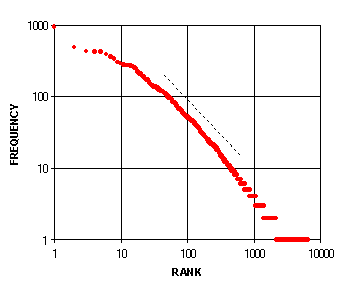
Problem D - Zipf's Law
Harvard linguistics professor George Kingsley Zipf (1902-1950) observed
that the frequency of the kth most common word in a text is
roughly proportional to 1/k. He justified his observations
in a book titled Human behavior and the principle of least effort
published in 1949. While Zipf's rationale has largely been discredited,
the principle still holds, and others have afforded it a more sound
mathematical basis.
You are to find all the words occurring n times in an English text.
A word is a sequence of letters. Words are separated by
non-letters. Capitalization should be ignored. A word can be of any
length that an English word can be.
Input
Input consists of several test cases.
The first line of each case contains a single positive integer n.
Several lines of text follow which will contain no more than 10000 words.
The text for each case is terminated by a single line containing EndOfText.
EndOfText does not appear elsewhere in the input and is not
considered a word.
Output
For each test case, output the words which occur n times in the
input text, one word per line, lower case, in alphabetical order. If there are no
such words in input, output the following line:
There is no such word.
Leave a blank line between cases.
Sample Input
2
In practice, the difference between theory and practice is always
greater than the difference between theory and practice in theory.
- Anonymous
Man will occasionally stumble over the truth, but most of the
time he will pick himself up and continue on.
- W. S. L. Churchill
EndOfText
Output for Sample Input
between
difference
in
will
